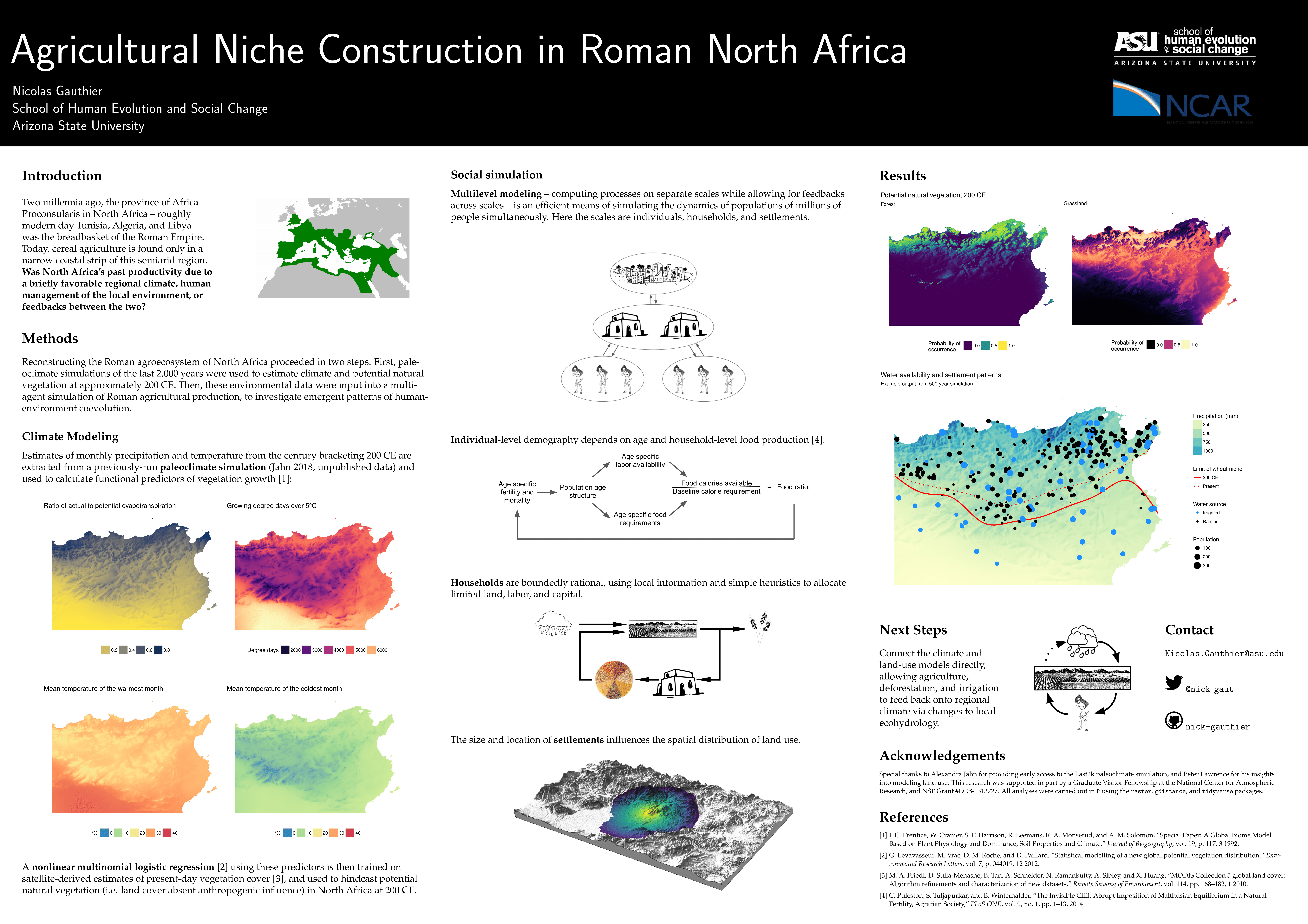
Agricultural Niche Construction in Roman North Africa
Abstract
Earth system models are climate models capable of simulating land-atmosphere feedbacks and the complex biogeochemical and biogeophysical processes that drive them. These models are particularly well-suited to studying the impact of preindustrial land use on regional climate change, as they explicitly resolve the impacts of irrigation, deforestation, and agropastoral production on the flow of water and energy between the land and atmosphere. Generating realistic maps of past land use is a difficult task, so paleoclimatologists often rely on static, coarse-resolution estimates derived from present-day conditions. In this poster, I present agent-based modeling as an alternative method to generate dynamic land-use maps that continuously contribute to and adapt to environmental variability. Using Roman North Africa as a case study, I show how such a coupled modeling approach is indispensable for understanding the coevolution of human societies and their natural environments.